#computermilestones
Explore tagged Tumblr posts
Text
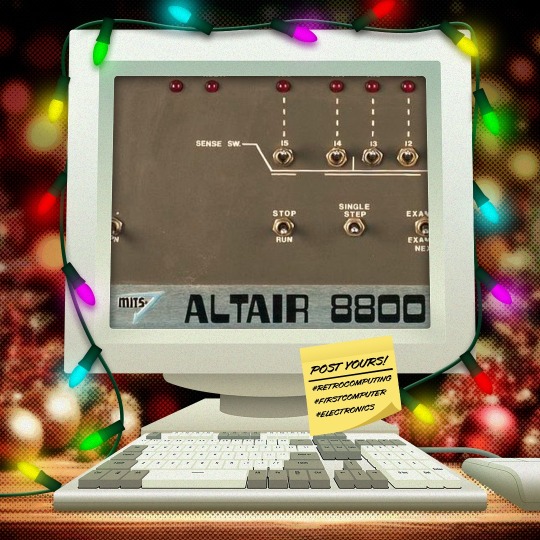
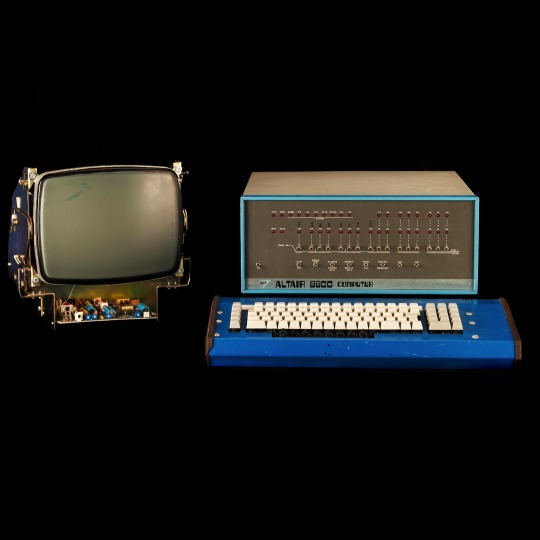
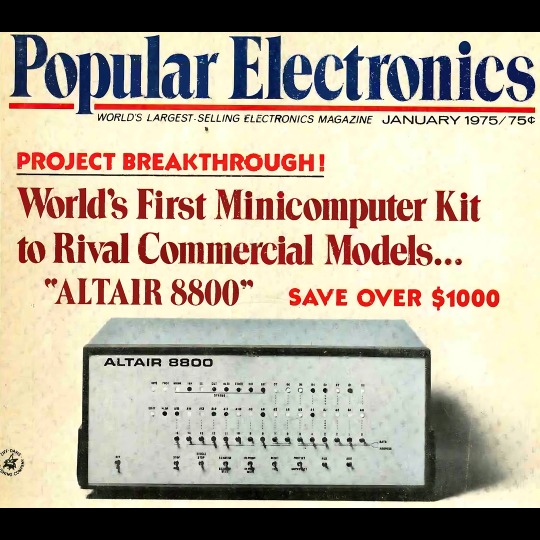
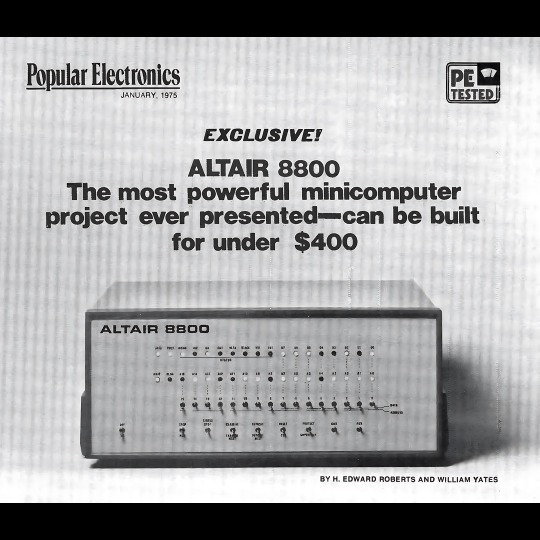

🎄💾🗓️ Day 7: Retrocomputing Advent Calendar - Altair 8800🎄💾🗓️
The Altair 8800 was one of the first commercially successful personal computers, introduced in 1975 by MITS, and also one of the most memorable devices in computing history. Powered by the Intel 8080 CPU, an 8-bit processor running at 2 MHz, and initially came with 256 bytes of RAM, expandable via its S-100 bus architecture. Users would mainly interact with the Altair through its front panel-mounted toggle switches for input and LEDs for output.
The Altair 8800 was popularized through a Popular Electronics magazine article, as a kit for hobbyists to build.
It was inexpensive and could be expanded, creating a following of enthusiasts that launched the personal computer market. Specifically, it motivated software development, such as Microsoft's first product, Altair BASIC.
The Altair moved from hobbyist kits to consumer-ready personal computers because of its modular design, reliance on the S-100 bus that eventually became an industry standard, and the rise of user groups like the Homebrew Computer Club.
Many of ya'll out there mentioned the Altair 8800, be sure to share your stories! And check out more history of the Altair on its Wikipedia page -
along with the National Museum of American History - Behring center -
Have first computer memories? Post’em up in the comments, or post yours on socialz’ and tag them #firstcomputer #retrocomputing – See you back here tomorrow!
#retrocomputing#altair8800#firstcomputer#electronics#vintagecomputing#computinghistory#8080processor#s100bus#microsoftbasic#homebrewcomputerclub#1975tech#personalcomputers#computerkits#ledswitches#technostalgia#oldschooltech#intel8080#computerscience#techenthusiasts#diycomputing#earlycomputers#computermemory#vintageelectronics#hobbycomputing#popularelectronics#techhistory#innovation#computermilestones#geekculture
45 notes
·
View notes
Text

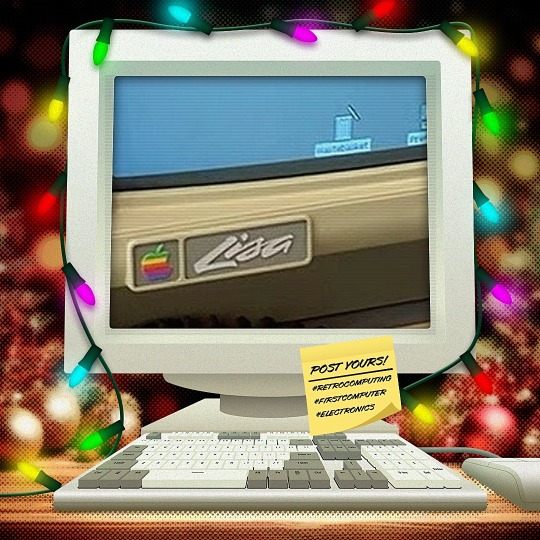
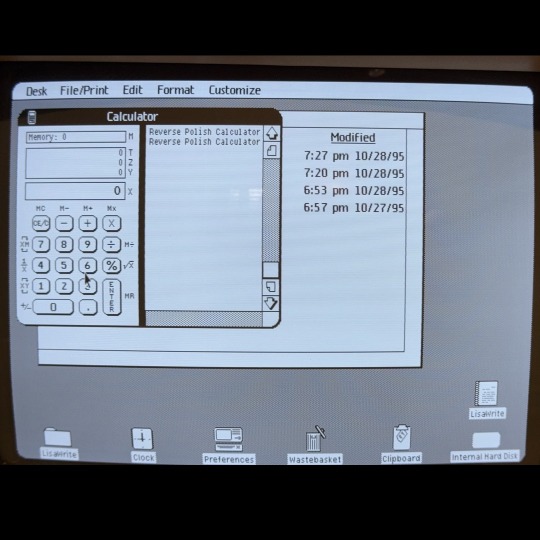

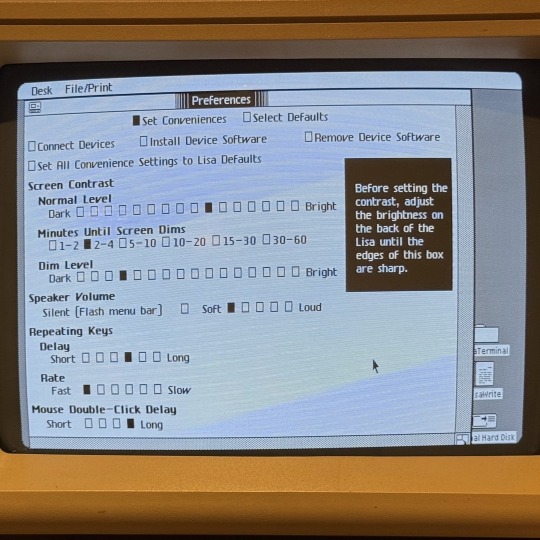





🎄💾🗓️ Day 9: Retrocomputing Advent Calendar - The Apple Lisa 🎄💾🗓️
The Apple Lisa, introduced on January 19, 1983, was a pioneering personal computer notable for its graphical user interface (GUI) and mouse input, a big departure from text-based command-line interfaces. Featured a Motorola 68000 CPU running at 5 MHz, 1 MB of RAM (expandable to 2 MB), and a 12-inch monochrome display with a resolution of 720×364 pixels. The system initially included dual 5.25-inch "Twiggy" floppy drives, later replaced by a single 3.5-inch Sony floppy drive in the Lisa 2 model. An optional 5 or 10 MB external ProFile hard drive provided more storage.
The Lisa's price of $9,995 (equivalent to approximately $30,600 in 2023) and performance issues held back its commercial success; sales were estimated at about 10,000 units.
It introduced advanced concepts such as memory protection and a document-oriented workflow, which influenced future Apple products and personal computing.
The Lisa's legacy had a huge impact on Apple computers, specifically the Macintosh line, which adopted and refined many of its features. While the Lisa was not exactly a commercial success, its contributions to the evolution of user-friendly computing interfaces are widely recognized in computing history.
These screen pictures come from Adafruit fan Philip " It still boots up from the Twiggy hard drive and runs. It also has a complete Pascal Development System." …"mine is a Lisa 2 with the 3.5” floppy and the 5 MB hard disk. In addition all of the unsold Lisa machines reached an ignominious end."
What end was that? From the Verge -
In September 1989, according to a news article, Apple buried about 2,700 unsold Lisa computers in Logan, Utah at a very closely guarded garbage dump. The Lisa was released in 1983, and it was Apple’s first stab at a truly modern, graphically driven computer: it had a mouse, windows, icons, menus, and other things we’ve all come to expect from “user-friendly” desktops. It had those features a full year before the release of the Macintosh.
Article, and video…
youtube
Check out the Apple Lisa page on Wikipedia
, the Computer History's article -
and the National Museum of American History – Behring center -
Have first computer memories? Post’em up in the comments, or post yours on socialz’ and tag them #firstcomputer #retrocomputing – See you back here tomorrow!
#applelisa#retrocomputing#firstcomputer#applehistory#computinghistory#vintagecomputers#macintosh#1980scomputers#applecomputer#gui#vintagehardware#personalcomputers#motorola68000#technostalgia#twiggydrive#floppydisk#graphicalinterface#applefans#computinginnovation#historictech#computerlegacy#techthrowback#techhistory#memoryprotection#profiledrive#userinterface#firstmac#computermilestone#techmemories#1983tech
109 notes
·
View notes